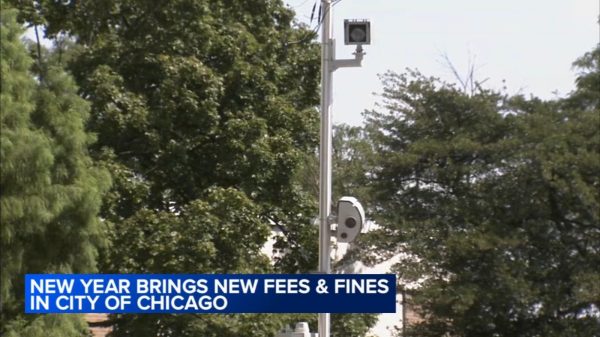An examination of national health and medical expenditure survey data, published online in the journal Tobacco Control, reveals that the annual tobacco-related health care expenditure of US minority smokers is twice that of white adult smokers.
Furthermore, despite having lower smoking rates and more quit efforts than their white counterparts, minority people have extra risks of three or more long-term health disorders linked to smoking that are more than 40% greater.
The results lead the researchers to the conclusion that, compared to white adults who smoke, individuals of color who smoke stand to gain significantly more from tobacco control legislation.
Tobacco use is the biggest preventable cause of sickness and death in the United States, with 480,000 premature deaths annually from smoking-related disorders, according to the study.
One of the most deadly diseases a long-time smoker might acquire is COPD (chronic obstructive pulmonary disease). Breathing becomes difficult with obstructive lung disease, such as COPD. It results in premature death and severe long-term disability. Playing with a grandchild or ascending a short flight of stairs can be difficult or impossible for someone with COPD to do. The disease often worsens over time. People may become stranded in their houses, unable to go out or see friends, or both. The cause of between 85% and 90% of cases of COPD is cigarette smoking. The sixth-most common cause of death in the US is COPD.
Smokers may also get lung cancer and heart diseases.
Compared to other cancers, lung cancer claims the lives of the most people. As the primary cause of about 90% of lung cancer cases, cigarette smoking is the biggest risk factor for the disease. About one in five people survives five years after receiving a diagnosis.
Almost every organ in your body is harmed by smoking, including the heart. Smoking can constrict and clog your arteries, reducing the amount of blood and oxygen that reach your heart. Heart disease rates fell in the United States along with the decline in cigarette use. Nevertheless, heart disease continues to be the leading cause of mortality in the US.
The US Food and Drug Administration put out regulations in 2022 that would establish a maximum nicotine level in an effort to lessen the addictive nature of cigarettes and prevent 33 million smokers by the year 2100.
However, the Office of Management and Budget (OMB), which supports the US President in formulating and carrying out policy, must demonstrate that the advantages of this kind of expansive regulation will exceed the disadvantages.
Additionally, the President asked earlier this year that the impact on various demographic segments be taken into consideration in cost-benefit evaluations for new tobacco control legislation.
Thus, the researchers calculated the racial and ethnic differences in US medical spending and smoking-related health outcomes for the first time.
In order to estimate the percentage of the top 10 health conditions and annual health care spending (adjusted for inflation) that can be attributed to smoking by race and ethnicity, researchers linked data from the 2008–19 Medical Expenditure Panel Survey (Household Component) and the National Health Interview Survey for 118,084 adults.
In the years between 2008 and 2019, 17% of white adults smoked the most cigarettes per day—14 vs. 9—while 15% of adults of minorities smoked.
In 2019, the percentage of white adults attempting to stop smoking decreased to 53%, while for minorities, this number rose to 63%.
Just under 12% of all medical care costs ($876 out of $7,208) for white people who smoked were due to tobacco use; for minority adults who smoked, mostly Hispanic and other racial groups, the amount was twice as high, at 25% ($1,509 out of $6,253).
Moreover, adults of color were notably more likely to suffer from three or more of the top ten smoking-related illnesses in the US: high blood pressure, high cholesterol, diabetes, joint pain, cancer, heart attack, arthritis, asthma, heart disease, and stroke. Compared to 24% of white individuals who smoked, they had a 34% higher likelihood of doing so.
For white individuals, smoking accounted for 7.5% of total health care spending in the country between 2008 and 2016, whereas for adults of color, it accounted for nearly 11%.
According to the researchers, this dropped to 2.5% for white adults in 2017–19 but only 9% for adults of color, suggesting that the significant decline in smoking rates over the years has not had a significant positive impact on their health.
Drawing on these statistics, the researchers calculated that the annual savings from new tobacco control laws would be $134 million for every 100,000 adults of color who did not start smoking—a 135% increase above the $57 million saved for the same number of adult white individuals.
For every 100,000 adults who choose not to start smoking, this would also save government health care programs $83 million annually—$60 million from adults of color and $23 million from white adults, the researchers note.
They admit that their findings have a number of limitations. These include concentrating only on cigarettes rather than vapes or other tobacco products and excluding spending on nursing homes, the military, and jail populations from their calculations.
But they still say, “Our results indicate that the minority population will benefit much more than the white population under anti-tobacco regulations that reduce smoking, exemplifying the importance of agencies including such distributional analyses in their regulatory cost-benefit analyses.”

















































